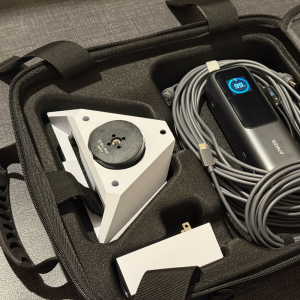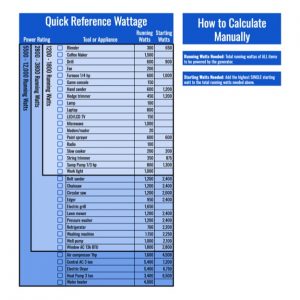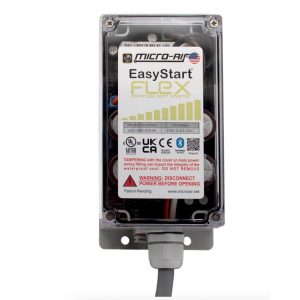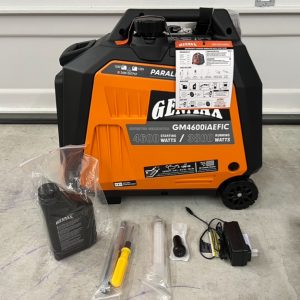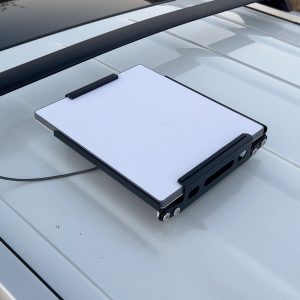Essential Accessories for Running Your Home on Emergency Power from a Generator
When the power goes out, having a generator can be a lifesaver, but without the right accessories, you may not be able to use it efficiently or safely. Whether you’re preparing for short-term outages or long-term emergency power solutions, having the right setup ensures your generator runs smoothly, powers your essential appliances, and keeps your home safe. Here are the must-have accessories to optimize your emergency generator setup.
1. Carbon Monoxide Alarms
A running generator produces carbon monoxide (CO), a deadly gas that is both colorless and odorless. Installing carbon monoxide alarms in key areas of your home ensures you stay protected from CO poisoning while using your generator. Amazon Link
- Recommendation: Install alarms near bedrooms and common areas to get alerts if CO levels rise to dangerous levels.
2. Generator Bonding Plug
Most portable generators (often called job site generators) are wired in such a way that the neutral and the ground are wired or “bonded“ together. This is exactly what you want when a portable/job site generator is used with extension cords. When the same generator is plugged into a home, it creates a situation that would not pass the National Electrical Code. In this situation, the neutral-to-ground bond wire inside your generator should be disconnected or a different generator should be used.
Disconnecting this bonding wire can be as easy as 5 minutes with a a few tools, and watching a YouTube video. Note: Disassembling part of your generator may void its warranty, but in some cases, generator manufacturers give instructions on how to remove this bonding wire to convert a bonded neutral generator to a floating neutral generator. If you ever need to use a floating neutral generator with extension cords and not a transfer switch or connecting it to your home panel, a simple DIY or store-bought Generator Bonding Plug for about $10 converts your generator back into a bonded neutral, for portable/jobsite use. Want to learn more? Watch this YouTube Video.
- Benefit: Ensures proper grounding and eliminates nuisance tripping of GFCI outlets.
3. Ethanol Shield Fuel Stabilizer
If you’re using a gasoline-powered generator, fuel degradation is a concern. Ethanol Shield Fuel Stabilizer prevents fuel breakdown, protects against moisture buildup, and extends the life of your generator’s fuel system. Amazon Link
- Best Practice: Add a stabilizer to fuel stored for longer than 30 days to keep it fresh and prevent engine problems.
4. Propane Heater Blankets
For those using propane-powered generators, cold temperatures can reduce propane efficiency and cause issues with fuel flow. A propane heater blanket keeps your propane tank warm and ensures steady gas pressure. Propane is much easier to store than gasoline but it’s just as flammable. Propane containers can be as small as a 20-pound BBQ-style cylinder or quite large, such as a 2500-gallon propane tank. You may be able to have a T-off connection installed on an existing above-ground or below-ground propane tank that is already hooked up to your home. Just make sure it’s appropriately sized for your generator so that it does not empty the tank too quickly and it leaves you with no propane for cooking. Propane has a lower output rating than gasoline, so the same generator running on gas will output a higher watt rating. Note: propane tanks can only be filled to 80% of their total capacity. Another consideration is that propane works better in warm or hot temperatures than it does in cold temperatures, and propane can freeze. Also, in low temperatures, the pressure inside of propane tanks decreases, meaning that the volume of propane that can be expelled from a tank is lower. When propane is being consumed, it creates a chilling effect on the propane tank and lines. When you combine all of the negative effects of using propane in extremely cold weather, it can easily cause icing on the propane lines and could cause a blockage of the propane tank line to the house that could cut off the flow of propane until things warm up, stopping you from cooking or heating. Properly insulating the lines can be very important. For above-ground propane tanks, a heater blanket can be installed. It’s critical to keep an eye on your propane tank level, especially in winter, when you would also be using your propane heater, along with knowing your propane consumption rate. Amazon Link
- Tip: Use a propane blanket if you live in colder climates to improve generator performance during freezing conditions.
5. Diesel Cold Weather Additives
Diesel-powered generators can experience fuel gelling in extremely cold temperatures. Adding a diesel cold weather additive prevents fuel thickening and ensures your generator starts reliably in winter conditions. Diesel stores much longer than gasoline, it does not gum up as easily as gasoline, diesel is also easier to work with in extremely cold weather by simply adding cold weather additives so that it does not gel up. Diesel is also a much safer fuel to store than gas or propane. Diesel generators are more expensive and are more common for larger applications, such as commercial backup and emergency standby generators or diesel motorhomes, where the generator draws from the same diesel tank as the coach. Diesel can be stored for a year using fuel stabilizers. Amazon Link
- Advice: Treat your diesel fuel in advance of winter to avoid startup issues when you need your generator the most.
6. Generator Interlock Kit
A generator interlock kit allows you to safely connect your portable generator to your home’s electrical panel without backfeeding the grid. This is a cost-effective alternative to a full transfer switch. Amazon Link
- Why It’s Important: Prevents accidental power backfeed, protecting utility workers and your home’s electrical system.
7. Portable Generator Through-The-Wall PWR Multi-Outlet Kit
Running extension cords through doors or windows is inefficient and can be unsafe. A Through-The-Wall Power Kit allows you to safely run power into your home while keeping the elements out.
- Ideal Use: For safely powering appliances inside without running cables through open doors.
8. Single 120V Passthrough
For those needing just a single, dedicated power line for a fridge, heater, or other appliance, a 120V passthrough provides an easy and safe way to bring generator power indoors.
- Use Case: Great for small emergency setups that don’t require full home power.
9. GenerLink Transfer Switch
The GenerLink is an easy-to-install meter-mounted transfer switch that allows you to safely connect your generator directly to your home’s electrical system. Amazon Link
- Benefit: Provides seamless power management with minimal installation effort.
10. 50-Amp Electrical Inlet Port
An electrical inlet port, with interlock (Amazon Link) installed on your main electrical panel, is a relatively easy install option. The benefit, like the GenerLink, is that it provides power to the entire electrical panel, so that all circuits have the capability of being energized. You control what you want energized from wall switches in your home or, unplugging unneeded items, or, for larger appliances like an electric water heater, the breaker in your electrical panel can be turned off. Oftentimes, the balancing of loads must be done as a home that has everything running can quickly exceed the output of a generator, causing a breaker to trip or the generator to shut down. This type of hookup does not, however, transfer your home back to the electrical grid automatically when grid power is restored, so you must rely on manually checking to see if there is grid power, or a text message notification from your provider notifying you service has been restored. Here is a DIY Video installing an Inlet Port & Interlock. Per code, an Inlet Port requires your generator to be wired as a Floating Neutral Generator. Amazon Link
- Why You Need It: Essential for connecting high-powered generators directly to your home’s panel.
11. Multi-Circuit Manual or Automatic Transfer Switches
Multi-circuit manual or automatic transfer switches allow you to select a set number of predetermined circuits that you wish to energize when the grid loses power. This is typically 6 to 10 circuits, depending upon the transfer switch model. When your home loses power, the input from the generator can be switched on to provide power to just the circuits that are wired to the transfer switch. An automatic transfer switch can be combined with a large high-output battery (anywhere from $800 to $3,500 – or pricier for a large multi-battery setup) to provide critical loads with instantaneous, always-ready power. You must confirm if the transfer switch requires your generator to be wired as a Floating Neutral or Bonded Neutral Generator. A transfer switch allows you to safely and efficiently switch from grid power to generator power. Whether manual or automatic, this setup prevents backfeeding and ensures only necessary circuits receive generator power.
- Manual Transfer Switch: Requires you to manually switch over when the power goes out. Amazon Link
- Automatic Transfer Switch: Detects outages and automatically switches your home to generator power. Amazon Link
DIRECT TO APPLIANCE CONNECTIONS (USING EXTENSION CORDS)
One of the easiest ways of using a portable generator is by running extension cords. You can run extension cords from your portable generator placed outside your home, run the cables inside, and plug devices into the end of the extension cord… BUT, this must be done carefully, as this can be dangerous and even life-threatening because of carbon monoxide entering through the space the extension cord is entering and the trip hazard that extension cords have. This may be your only option if you are actively in a disaster. You can also install a Portable Generator Through-The-Wall PWR Multi-Outlet Kit or a single 120v passthrough. They are both isolated outlet plugs, bypassing your home’s electrical system, and giving you wall outlet(s) that you plug devices into without running electrical cords through open windows or doors.
Final Thoughts
Setting up your home for emergency power requires more than just a generator. With the right accessories, you can ensure safe, efficient, and hassle-free power management during outages. Investing in these essential components will give you peace of mind, knowing that when the lights go out, you’ll have reliable backup power ready to go.
If you’re preparing for emergencies or upgrading your generator setup, consider adding these must-have accessories to your plan. They’ll help you maximize your generator’s potential, improve safety, and keep your home running smoothly no matter what comes your way.

